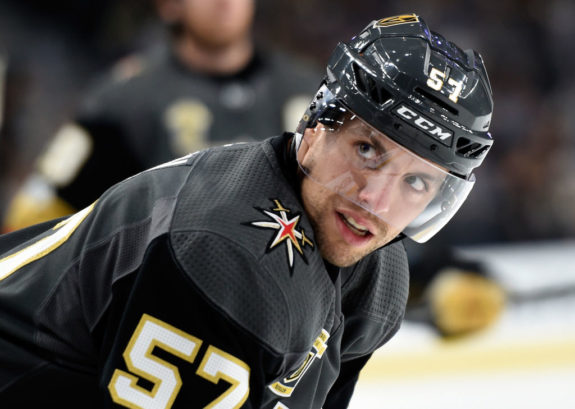A common critique of the Detroit Red Wings is that they lack star power. Without truly elite talent, they are not adequately set up to compete and succeed.
This isn’t a problem, though. Before I get into why, allow me to tell you a little bit about myself.
I am not a journalist – I don’t craft narratives. This is just a hobby for me.
If anything, I consider myself an analyst. I look at situations from all angles and determine next steps and alternatives.
I say this because the analysis here is a review of Detroit’s current situation, not a biased, rosy narrative railing against the haters or a contrarian take. I’m calling it as I see it:
At this juncture, the Red Wings do not need star power to compete and succeed. Success can be achieved with the current roster, provided that the team fully buys into an effective strategy. The lack of desirable alternatives and the prevalence of luck in the sport also support this recommendation.
Further details are outlined below.
Bought-In Teams Triumph Over Stars
It’s true – teams driven toward a common goal with 100 percent buy-in can and will beat collections of stars. Perhaps the most famous example of this is the Miracle on Ice squad that defeated the high-powered Russian Olympic team at the 1980 Winter Games.
More recently, we’ve seen this “we over me” approach carried out successfully by the 2017-18 Vegas Golden Knights and the 2021-22 Seattle Kraken. The Golden Knights, in particular, rode a strict, swarming system all the way to the Stanley Cup Final in their first year of existence. There were no stars – just a team of bought-in contributors (including David Perron) working toward a common goal.

This is also what made the Russian Five great. Sure, they were highly skilled players. But their success was derived from the system that they executed perfectly. Each member of the Russian Five knew exactly where their teammates would be at all times, which allowed for risks and creativity outside of positional norms.
Related: Red Wings’ New Additions: Roles & Predictions for 2023-24
This is true for any facet of life. Hockey. Business. Medicine. If individuals are committed to a common goal and understand their role (and the roles of others), then the collective production is greater than the sum of its parts.
Luck & Its Impact On NHL Games
According to Michael Mauboussin, author of The Success Equation, luck has a greater impact on NHL regular season standings than any other professional sport. In addition, Mauboussin’s findings suggested that luck has more of an impact on the outcome of games than skill does.
Think about it – Nathan MacKinnon is only one of 18 skaters dressed by the Colorado Avalanche for any given game. When you add in the goalies and the other team, he’s only one of 40. Simply put, there are too many variables in play for one or two players to have an overwhelming impact on the outcome of a game.

This logic applies to the postseason, too. Research conducted by Julian Ryan and Barrett Hansen found that luck’s influence on NHL playoff games didn’t differ too greatly from what had been previously observed by Mauboussin during the regular season.
All of this to say, statistical favorites don’t always win. The prevalence of luck has a lot to do with this.
The Market for Star Players
Let’s revisit the original critique – the Red Wings can’t succeed without star power. Instead of trying to compete without star players, the alternative is to acquire them.
That’s easier said than done, though. To illustrate this, let’s consider the three ways the Red Wings can bring in generational talent:
- Continue to rebuild and draft stars
- Conserve cap space for star free agents
- Trade for stars
Each of these methods comes with significant risk.
For example, rebuilding (again) doesn’t guarantee anything. Today’s team is proof of that. They’ve rebuilt twice and haven’t come away with a generational talent yet. Due theory doesn’t apply here – draft lottery odds are completely independent of what’s happened in the past (unless you actually win).

This isn’t to say that rebuilding—in general—is a flawed notion. Rebuilding for the third time in a row is, though.
Free agency is no different. Stars rarely hit the open market these days. Since 2020, only four players have signed contracts with AAVs of $8 million (proxy for “star players”) or more with new teams: Johnny Gaudreau, Dougie Hamilton, Alex Pietrangelo, and Taylor Hall.
When a star player reaches free agency, it’s a seller’s market – an all-out bidding war resulting in one team overpaying for the player’s services. The secondary effect of this is a decimated budget that’s supposed to cover an entire team.
And finally, the trade route is similar to free agency. If teams covet these players, then stars hitting the trade block will be a rare occurrence. And again, it’ll be a seller’s market if anyone actually becomes available, requiring significant assets (players, prospects, draft picks, and cap space) to be dealt in exchange for the star player.
Related: 3 Red Wings With Something to Prove In 2023-24
Simply put, nothing is guaranteed with any of these approaches, regardless of what the intentions are. And that risk should be weighed appropriately.
Red Wings Can Succeed Without Stars
Due to the prevalence of luck in hockey and the ability of bought-in teams to produce more than the sum of their parts, organizations can win with or without star power. Essentially, there is more than one way to succeed in the NHL.
The Red Wings can compete and succeed without star power. They have enough collective talent, a deep prospect pipeline, an astute coaching staff, and a healthy salary cap picture that are all required to support a sustainably successful franchise moving into the future.
